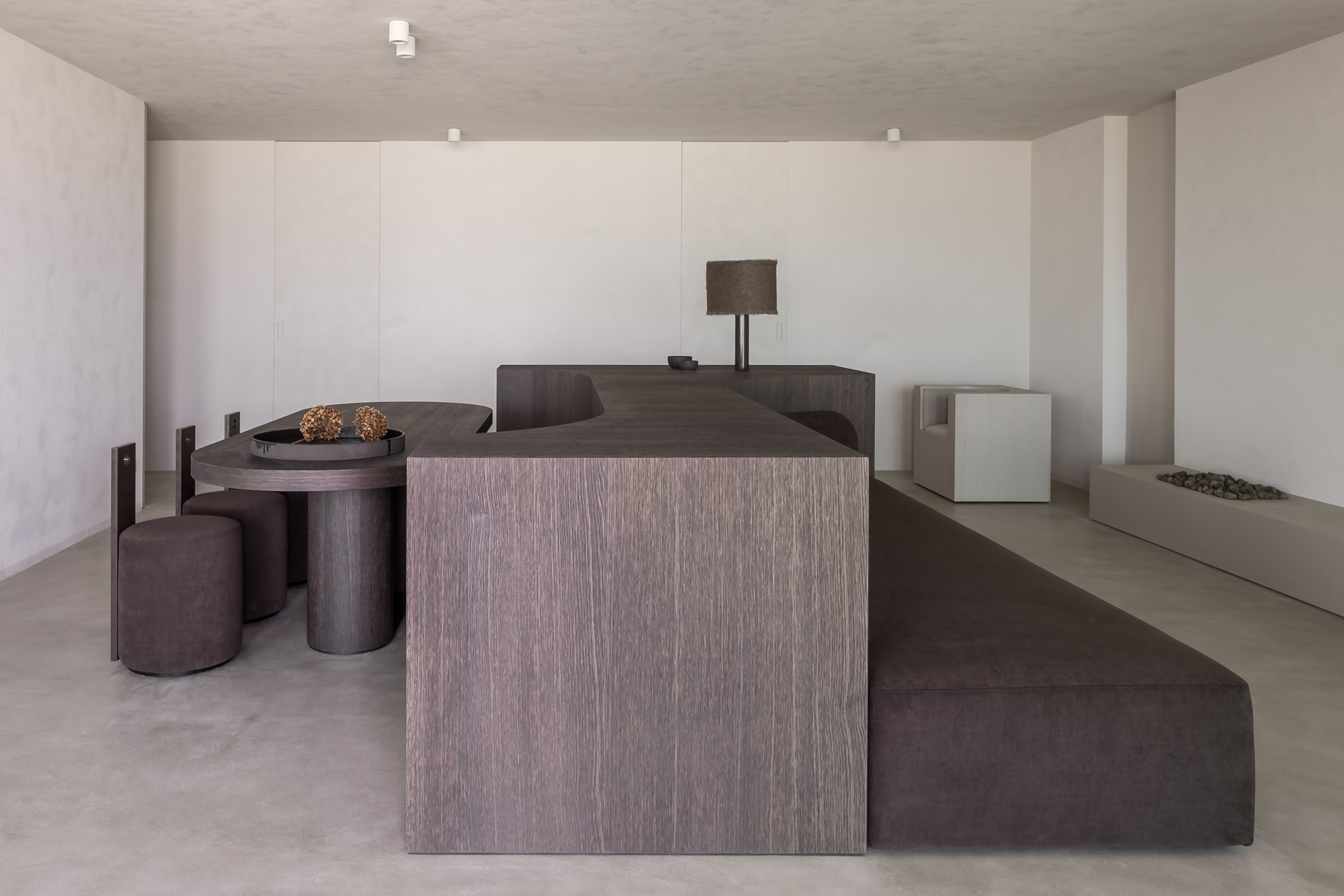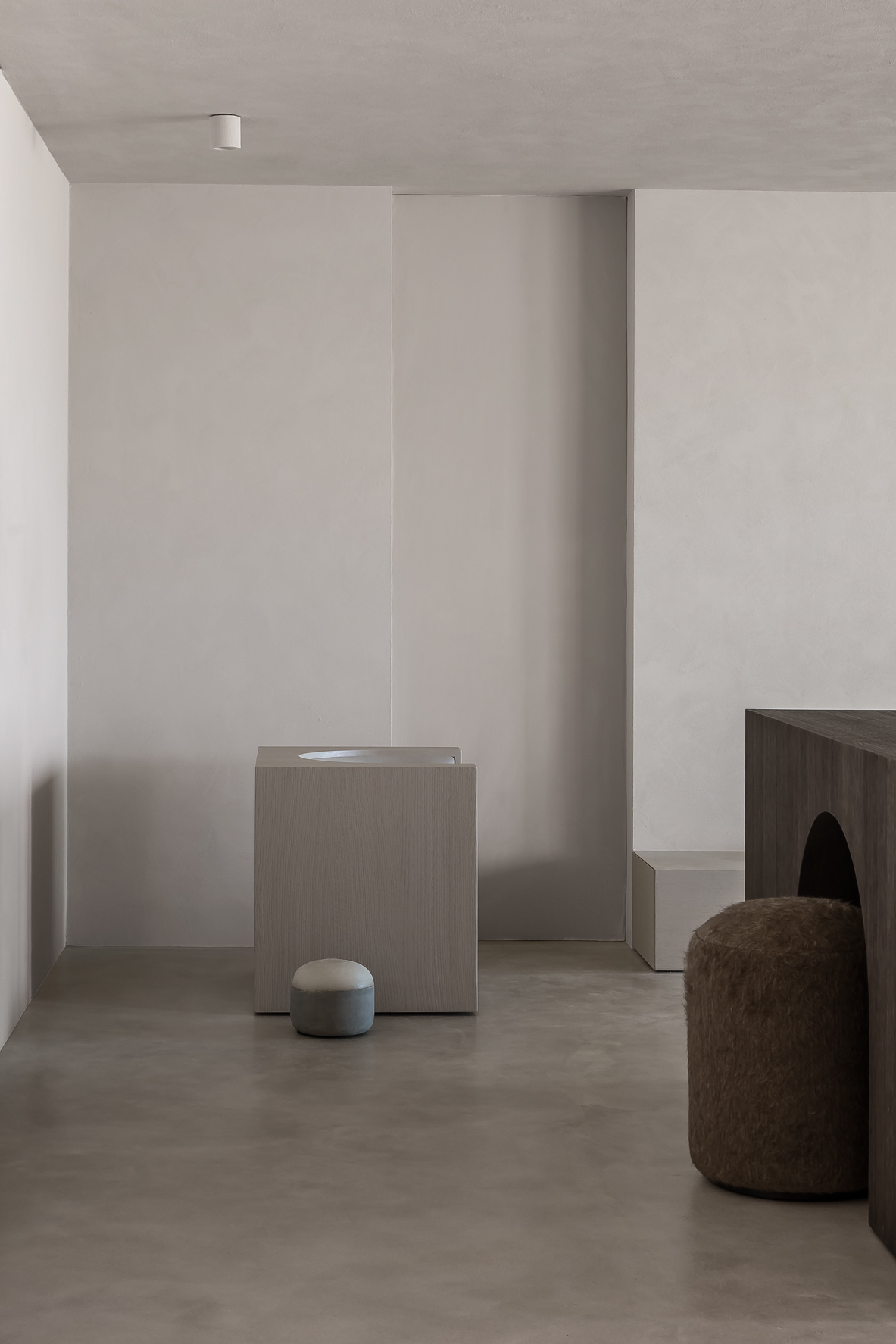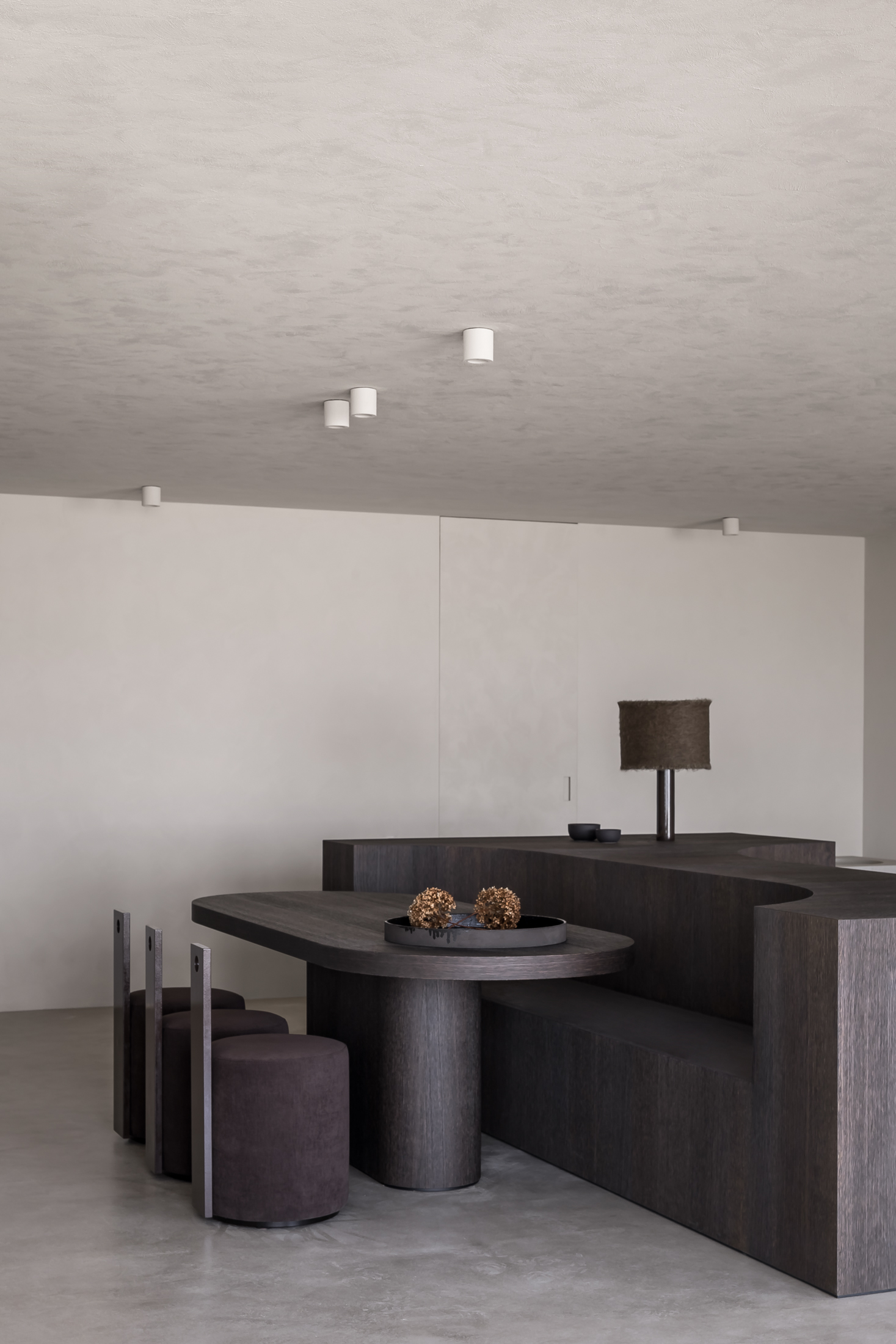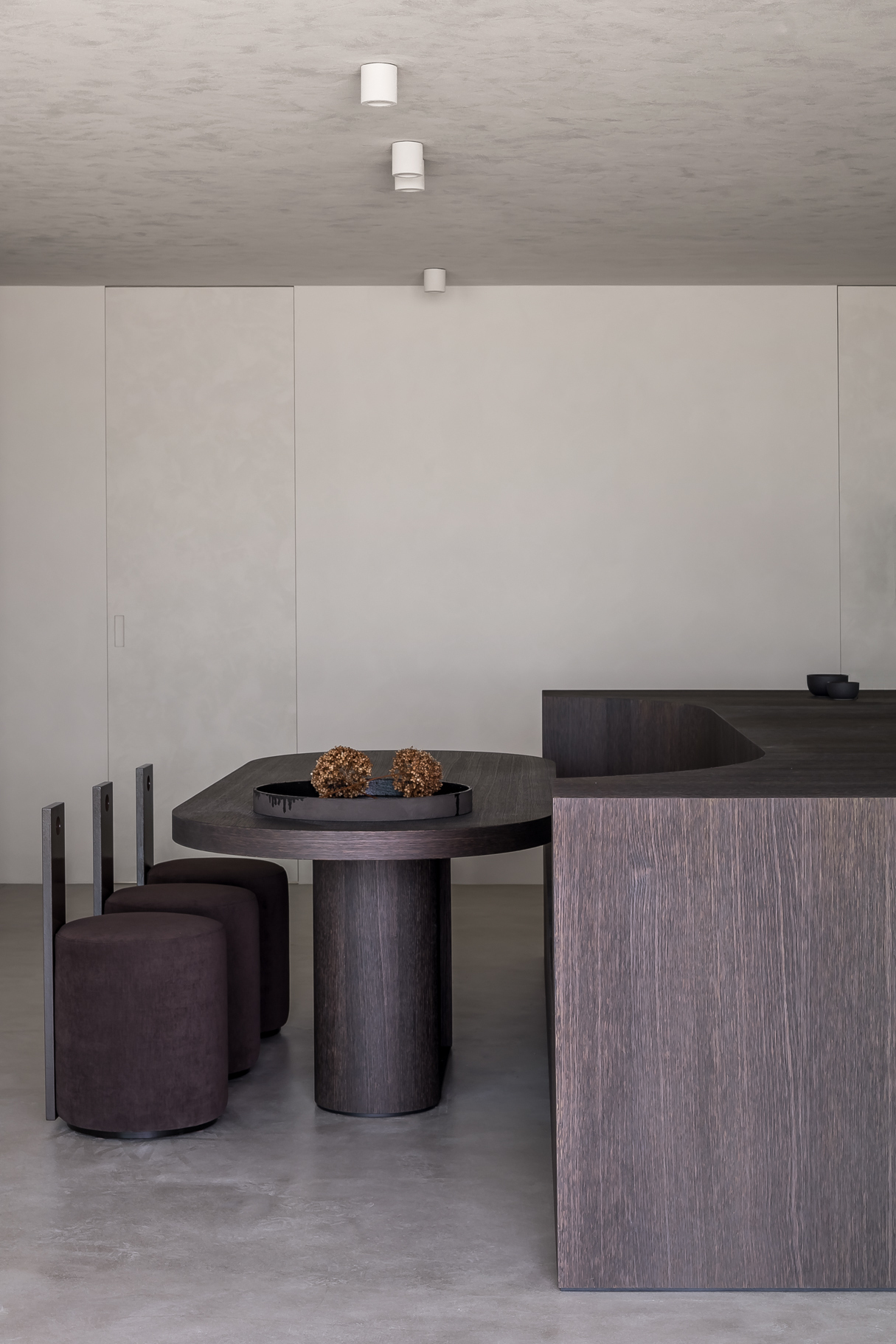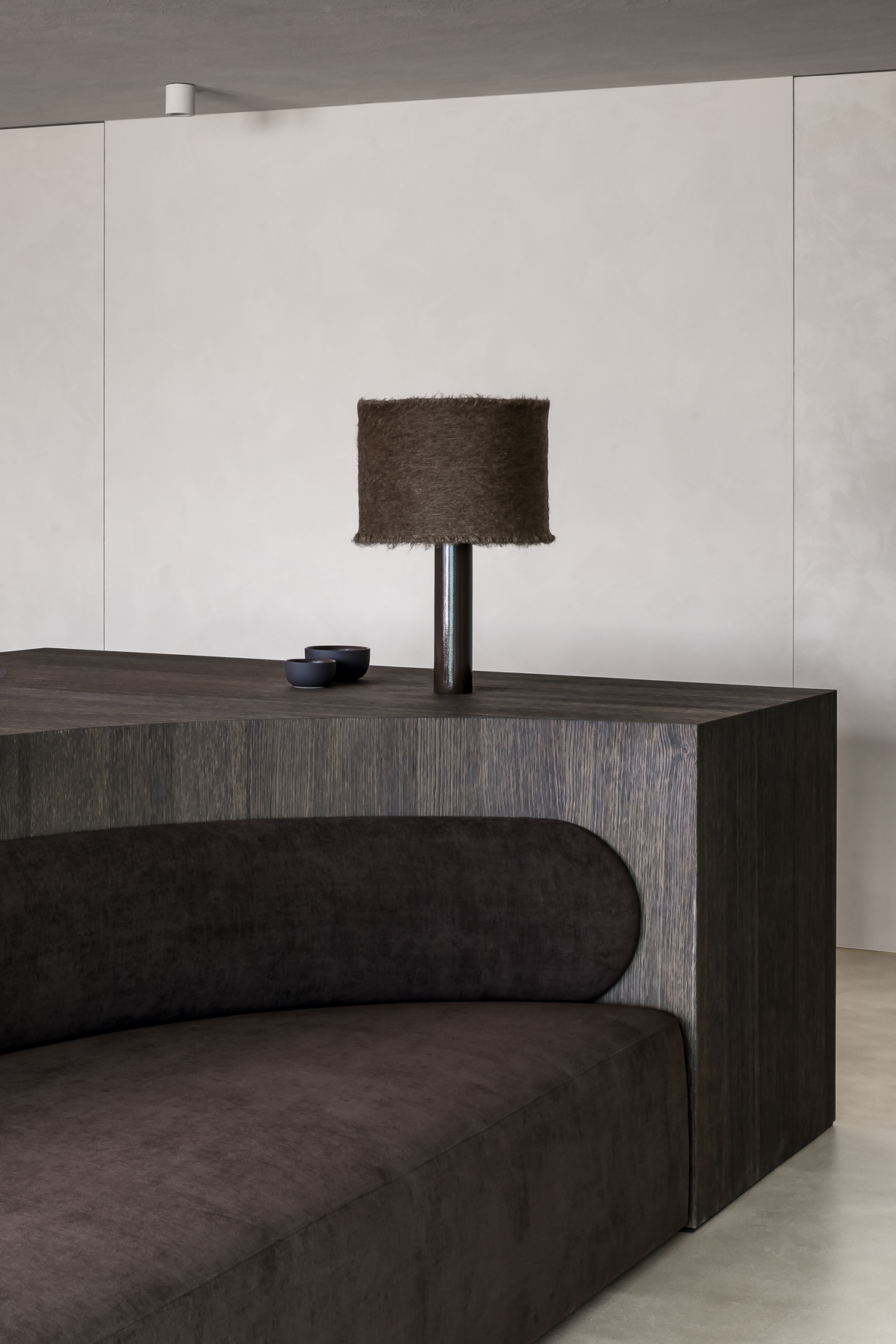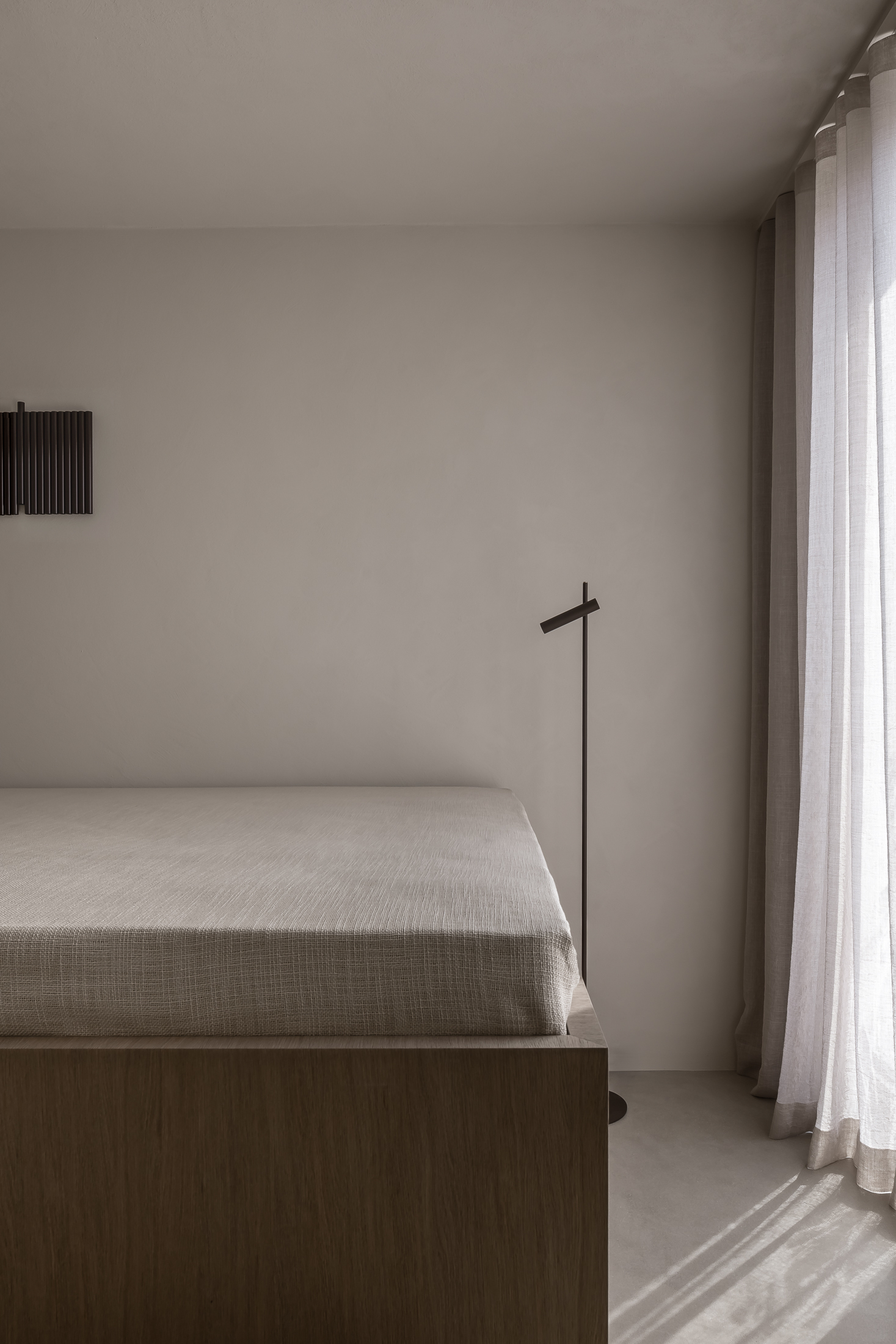Terra Residence is a minimalist house located Zeebrugge, Belgium, designed by Jessy Van Gorp. There’s something quietly revolutionary about the way the Terra project mediates between human habitation and natural landscape. In the first glimpse of the space, one notices not boundaries but transitions – the pebbled terrazzo of the kitchen island echoing the textural vocabulary of the shoreline visible through expansive windows. This isn’t merely aesthetic mimicry but a deeper conversation about how design can dissolve the artificial barriers we erect between indoor comfort and outdoor wildness.
The designers have approached the challenge through a material language that speaks of both refinement and rawness. Wire-brushed oak cabinetry reveals rather than conceals the grain of the wood, celebrating its natural irregularities while simultaneously demonstrating the careful hand of the craftsperson. This tactile quality extends throughout the space, where lime-based terrazzo flooring creates a continuous surface that unifies disparate functional zones.
Perhaps most intriguing is the multifunctional island piece that defies conventional categorization. Neither purely table nor desk nor seating, it becomes instead a sculptural centerpiece that orchestrates the social choreography of the space. Its curved cutouts and thoughtful proportions transform what could have been merely efficient into something genuinely poetic.
This fluidity extends to the innovative treatment of the bathroom spaces, where cylinder forms with stainless steel accents create visual rhythm. The repurposed computer screen micromosaics represent a particularly thoughtful intervention – transforming digital waste into a material that captures and refracts light much like the nearby ocean surface.
The sofa’s contribution to this environment is especially noteworthy. Its custom form, precisely shaped to complement the island’s negative space, demonstrates how thoughtfully designed lounge furniture can transcend mere comfort to become integral to the architectural experience. The curved form invites both conversation and contemplation, positioning bodies in relation to both each other and the coastal vista beyond.


